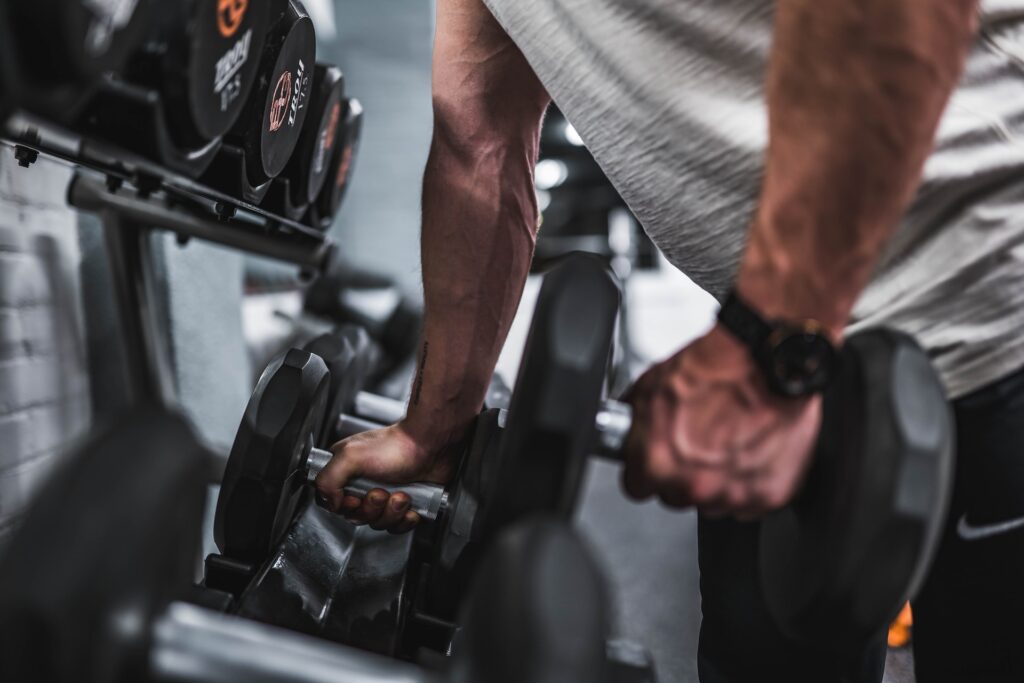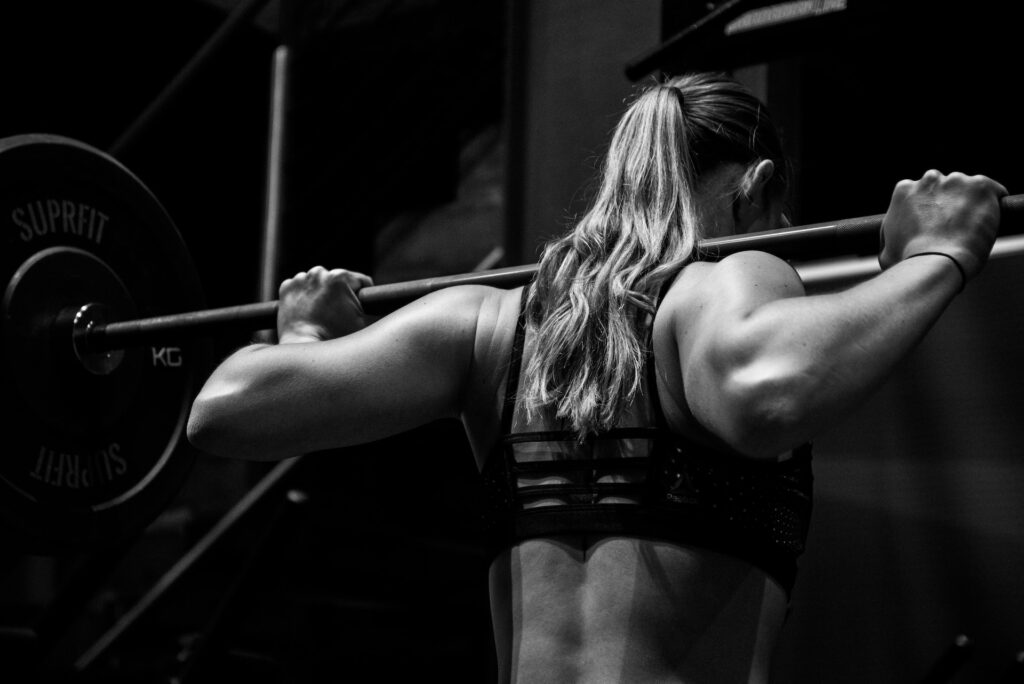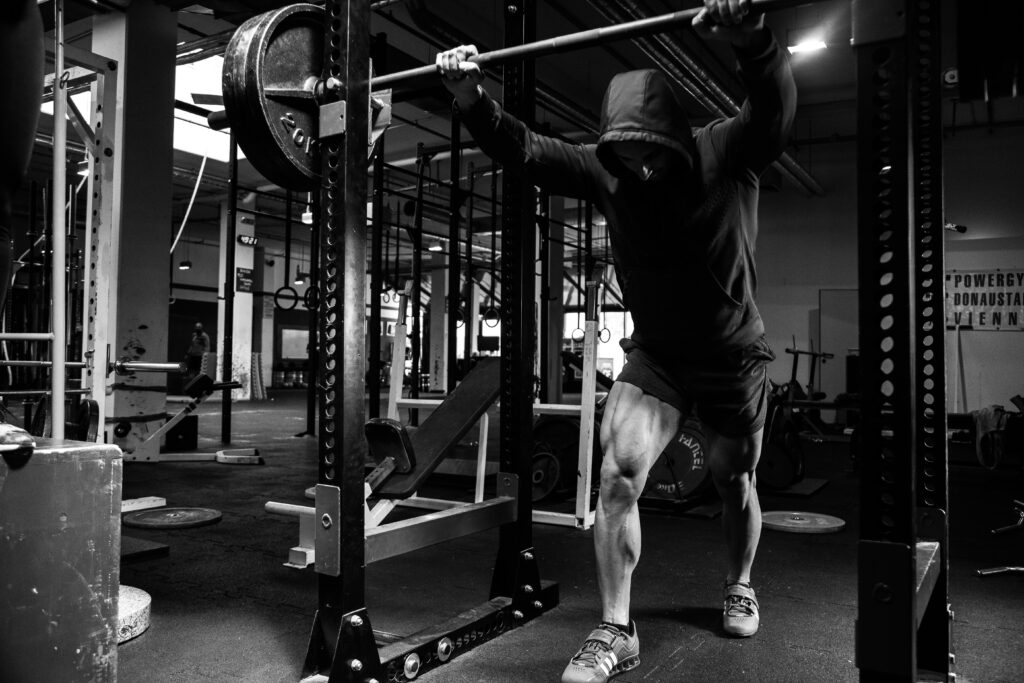Introduction
Although I’m writing this article, the argument itself is actually almost pointless. Your training in the gym doesn’t have to side towards one of the two camps. You will find free weights and machines can offer you benefits that the other simply can’t, and would probably benefit more from a well rounded programme that has some element of the two.
If you were to ask me what my preference would be then I would say there is a blend of the two with a lean towards resistance machines and cables. So that you understand my reasoning, we will look at this from a hypertrophy approach.

Photo by John Arano on Unsplash
The pro’s and con’s of machines/cables
Pro: Ability to change the path/plain of motion. Machines and pulley systems have the ability for various components so move, which can drastically change the way an exercise feels. When looking to perform a seated cable fly, various cable heights can be set to provide each head of the pecs with a various degrees of tension. With the cable set just above the shoulder and moving in a downward direction, the lower portion of the pecs (costal head) receives the greatest stimulus. With the cable set low and moving in more of an upward direction, more of the upper pecs (clavicular head) is targeted, and with the cable set in line with the chest and the cable moving horizontally, it will target more of the mid pecs (sternal head). Simple changes to the cable height or your orientation around the cable can provide multiple variations of the same exercise that all work to target slightly different regions of that muscle.
Pro: stable and fixed environment. Due to machines working in a fixed path of motion and offering a bracing point (usually in the form of a back pad, thigh restraint etc), you are able to utilise higher levels of force production. This can be largely beneficial when looking to train that target muscle to or close to failure as your attention is diverted simply towards moving from point A to B. stability = ability. Take a machine chest press in comparison to a dumbbell chest press. The dumbbell variation could see the users level of abduction and wrist position change both throughout the set and even within reps, where as the machine offers far more stability, has very little opportunity for technique change while also offering little opportunity for error.
Pro: Ability to manipulate resistance profiles. A resistance profile refers to how much torque (force) is required for you to move said object throughout the range of motion. A cable lateral raise is the perfect example. When set up at the floor, we can see where the force requirement is largest as the cable and the lifters forearm will be perpendicular. This is because at 90 degrees, the cable will be furthest away from the lifters working joint and either side of that will see the distance shorten. From a floor height, this will see the mid point of the exercise as being the most demanding, where as when moving the pulley height in line with the waist, we can see that the forearm and cable sit perpendicular at the very beginning of the movement. This means that start position is then the hardest. Based off of this, we can change the point of the movement that is most depending with simple changes to where the pulley sits. We can do very similar things to exercises without pulleys too. On a hack squat, we have two points that are particularly difficult. Point one is where the thigh angle runs perpendicular to to the direction the hack squat likes to move in because our working joint (knee) will be furthest away from the machine. Point two is when we reach the very bottom and this is because with multi joint movements, we are stronger when they stack. That bottom position is the furthest point from the joints being stacked. A simple fix is to ‘reverse band’ meaning to tie a resistance band around the back of the machine that is fixed and the part that moves. This means as you descend into the squat, the band will take tension away, and when you ascend, it will re-apply it. Both of these tactics simply help to make the movement function better with your muscle and end goal.
Pro: Variety of attachments. Cables have the ability to attach and detach handles, cuffs, ropes, bars, and many others. This is valuable from both a comfort perspective but also an accuracy perspective. This means you always have access to the best tools to complete the appropriate job. From a variety perspective you can then complete the same movement but provide a different challenge that may see you move past plateaus or stagnant points within training e.g. swapping a rope for a cuff with your tricep extensions.

Photo by Kaka Sandhu on Unsplash
Con: Not everyone fits all machines. This is probably the biggest problem of them all. This can be because of seat heights, handles positions, running out of range of motion , and so many other factors. Although machines have a high degree of adjust-ability, you will find some that just don’t work for you, no matter what you do.
Con: Doesn’t have the one you want. Not every gym has every piece of kit. Unfortunately although some pieces look the same, they can feel entirely different and on some occasions, just feel clunky and not for you. There will be occasions where you just have to compromise with whats available and work with what you have.
Con: Not enough weight. You heard that right. Some machines are simply ridiculously light. We can make every effort to make them feel heavier than they are, but there are some cases where you will max that machine out, and your only option is to keep taking that rep range higher. Although I would recommend a gym pin, not every machine is capable of withstanding the additional weight.

Photo by amol sonar on Unsplash
The pro’s and con’s of free weights
Pro: Freedom of movement. Taking any free weighted movement, you have the ability to perform the range of motion in the manner that suits your anatomy and comfort. This means you can adjust foot placement, arm path, wrist position etc. This therefore makes the movement even more unique to you and specified to you training needs.
Pro: Secondary muscle group activation. In every movement there are both primary and secondary movers as well as stabiliser muscles. Free weight movements hit the secondary and stabiliser muscles particularly well to the reduced level of stability. This can cause one of two things to occur. Firstly you may find as that target muscle fatigues, you get even more activation from the secondary mover and secondly, that particular lift may require an entire muscle group to keep you stable. The perfect example is the spinal erectors within a barbell row. In this case we have no chest brace so the spinal erectors work to keep the back neutral, while the hamstrings work to prevent any further hinging. The upper/mid back and lats will receive most of the stimulus, however the erectors and hamstring will also receive some volume too.
Pro: Accessibility. As long as the facility you enter has dumbbells, bars and a squat rack, you can get nearly all the desired free weight movements performed with relative ease. You may come under the problem of some facilities not having enough weight for a given movement, however slower tempo and higher rep range can generally fix that problem.

Photo by Jelmer Assink on Unsplash
Con: Unstable environment. When looking a free weighted movements, there is generally little opportunity for external bracing, meaning that internal bracing has to be on point for a successful movement. Take a barbell squat, although once mastered it can look clean and flawless, there are points that must be considered. Lateral flexion of the spine, rotation of the torso and the shifting forward/backward of centre of mass can all cause the movement to deteriorate/fail. This means additional technique work, extra warm up sets and secondary complimentary movements may all need to be performed to execute a successful set.
Con: They’re less energy efficient: Due to the unstable environment listed above, more musculature needs recruiting to perform a successful lift which can cause more fatigue. This doesn’t mean more fatigue to the target muscle, it means more fatigue to all musculature systemically. Free weights also suffer with little ability to manipulate the resistance profile, meaning nearly all free weighted movements are harder in the contraction rather than the stretch, which by current research is the opposite resistance profile for optimal muscle growth.
Con: Some planes of motion are missed. Every muscle can be worked in various planes of motion due to the ability for the joint(s) they’re attached to being able to move freely. Using a cable, we can adjust the pulley height from around foot height to above head height, meaning the angle of pull can always be adjusted to meet the demands of an exercise. This can’t always be done with free weights and upper body pulling movements in a flexed shoulder position are great examples of this. When looking at movements like a face pull or rear delt fly, the rear delt likes to pull from high to low. This means a cable can be set just above shoulder height with the end of the movement finishing below shoulder height. Matching this with free weights would usually involve us angling the torso parallel to the floor with the chest supported on a bench. This is still a great option but doesn’t line up with the muscle fibers quite as well. In order to hit them effectively, we would need even more of a forward lean which be neither practical or safe. The same can be applied to any upper back or lat focused pull downs that run off varying lines of pull.

Photo by Ambitious Studio* – Rick Barrett on Unsplash
What should you do with this info?
Use the best tool to do the best job. Find the exercise that fits the requirements that you have set and the one that suits your goals.
If you require high levels of stability in certain movements then pick a machine.
If you would prefer more freedom of motion with a chosen movement then select a free weight.
Both types of movements can be taken to failure and progressed upon with frequency, but they have to make sense. Stimulus to fatigue ratio should still be considered as we know free weighted movements will be less energy efficient. Taking a lower day as an example, a session of Barbell squats, RDL’s, lunges and Nordic hamstring curls will be far more systemically taxing but possibly not as locally (within the muscle) taxing as, the hack squat, RDL, leg extension and machine leg curl. There is still a mix of free weights and machines with the knowledge that you are simply picking tools.
Conclusion
Hypertrophy training is about generating as much tension and force as possible through various ranges and planes of motion. You will need to train each muscle to or near failure, experiencing the contraction velocity slowing as you approach that point of failure. Once you know this, you can pin point which exercise(s) gives you this while still being performed in a safe manner.
If you want to see more information on training and nutrition, see my latest Instagram posts at @the_biomechanics_coach. Or, if you are interested in exploring other areas of your training and becoming the best athlete you can be, what about reading my last post on what you should be tracking.



